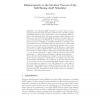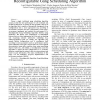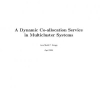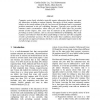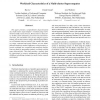JSSPP
2004
Springer
14 years 5 months ago
2004
Springer
The self-tuning dynP scheduler for modern cluster resource management systems switches between different basic scheduling policies dynamically during run time. This allows to reac...
JSSPP
2004
Springer
14 years 5 months ago
2004
Springer
Using a single traditional gang scheduling algorithm cannot provide the best performance for all workloads and parallel architectures. A solution for this problem is the use of...
JSSPP
2004
Springer
14 years 5 months ago
2004
Springer
Abstract. In order to evaluate different scheduling strategies for parallel computers, simulations are often executed. As the scheduling quality highly depends on the workload tha...
JSSPP
2004
Springer
14 years 5 months ago
2004
Springer
JSSPP
2004
Springer
14 years 5 months ago
2004
Springer
Job scheduling typically focuses on the CPU with little work existing to include I/O or memory. Time-shared execution provides the chance to hide I/O and long-communication latenc...
JSSPP
2004
Springer
14 years 5 months ago
2004
Springer
JSSPP
2004
Springer
14 years 5 months ago
2004
Springer
The well-known TOP500 list ranks the 500 most powerful high-performance computers. However, the list lacks details about the job management and scheduling on these machines. As thi...
JSSPP
2004
Springer
14 years 5 months ago
2004
Springer
Three-dimensional torus is a common topology of network interconnects of multicomputers due to its simplicity and high scalability. A parallel job submitted to a three-dimensional...
JSSPP
2004
Springer
14 years 5 months ago
2004
Springer
Computer system batch schedulers typically require information from the user upon job submission, including a runtime estimate. Inaccuracy of these runtime estimates, relative to ...
JSSPP
2004
Springer
14 years 5 months ago
2004
Springer
This paper presents a comprehensive characterization of a multi-cluster supercomputer1 workload using twelvemonth scientific research traces. Metrics that we characterize include...
